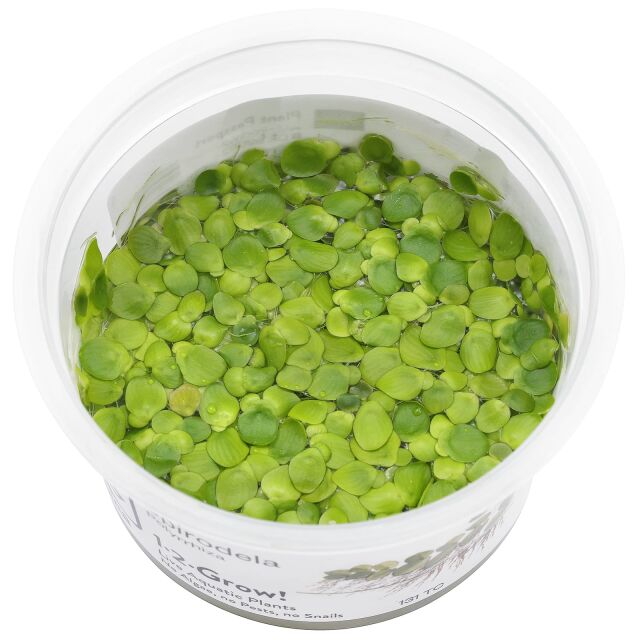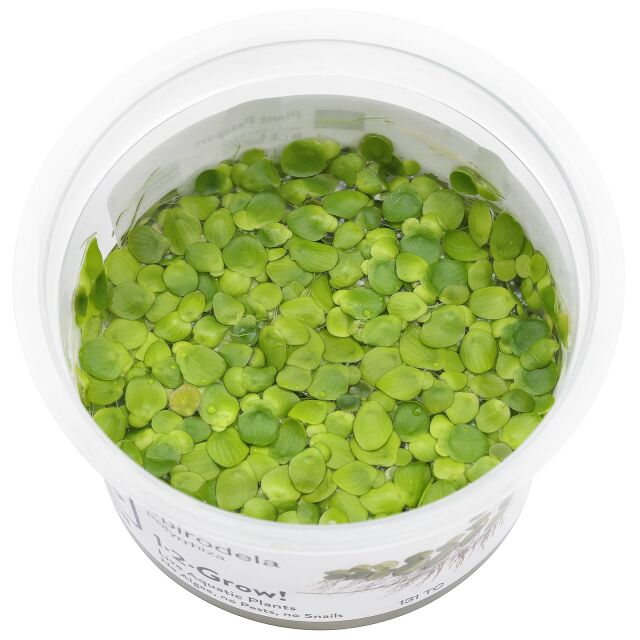Giant duckweed



Spirodela polyrhiza
Giant duckweed
- Small floating plant
- Rarely kept in aquaria so far
- Red underside
- Suitable for cold and warm water aquariums
- Does not need much light
Item question
We’re here for you!
Please enter your question and e-mail and we’ll contact you as soon as possible. It usually takes us up to 24 hours during business days to respond.
Thank you for your question!
Thank you, we’ll get in touch!
Close window
You already sent us a question.
Please wait a few minutes
Description
The Greater duckweed stands out among the duckweeds due to its size and round shape. It is reminiscent of very small frogbit. Spirodela polyrhiza (also spelt S. polyrrhiza) is a true cosmopolitan; it occurs on all continents except Antarctica, from the temperate to the tropical climate zone. This floating plant grows in stagnant to slow-flowing, nutrient-rich, often somewhat shaded waters. Together with other duckweed species, it often forms a closed cover. The round fronds are about 0.5 to 1 cm in size. The upper side is light to medium green, with a reddish tinge in bright light. The underside is reddish to dark red and has a tuft of about 7 - 21 roots. New fronds sprout from "pouches" on the sides, which sooner or later detach. Under unfavourable conditions such as a lack of nutrients or frosty temperatures, the giant duckweed forms 2 - 3 mm wide, kidney-shaped, olive-coloured turions that sink to the bottom. These perennating buds sprout as soon as favourable growth conditions prevail again.
Spirodela polyrhiza is a fairly easy plant, but like other aquarium floating plants it needs a good supply of nutrients, especially macronutrients (nitrate, phosphate, potassium), via the water. Moderate light intensity is sufficient. The plant is tolerant of different pH values and carbonate hardness levels. Like other floating plants, it must be reduced occasionally so that it does not shade the plants below too much. Removal is much easier than with other, smaller duckweed species due to the relatively large fronds. If it appears to disappear when the nutrient supply is poor, you can expect turions to sprout again.
The Giant duckweed is not yet very well known as an aquarium plant, but is an attractive alternative to larger floating plants, especially in small containers. It is suitable for both cold-water and tropical aquaria, and one advantage is its low light requirement. Because it is easier to reduce, this duckweed is hardly as troublesome as the smaller Lemna species. Spirodela polyrhiza offers the same advantages for the aquarium environment as other floating plants; it absorbs pollutants and excess nutrients and provides cover for shy aquarium animals, especially young fish.
How many plants do I need?
General information
Please choose a variant to see more information.
| Item no. |
|
| EAN | |
| Weight | |
| Shipping weight |
Customers ask customers
You have questions about this product? Ask other customer or our support team about this product!